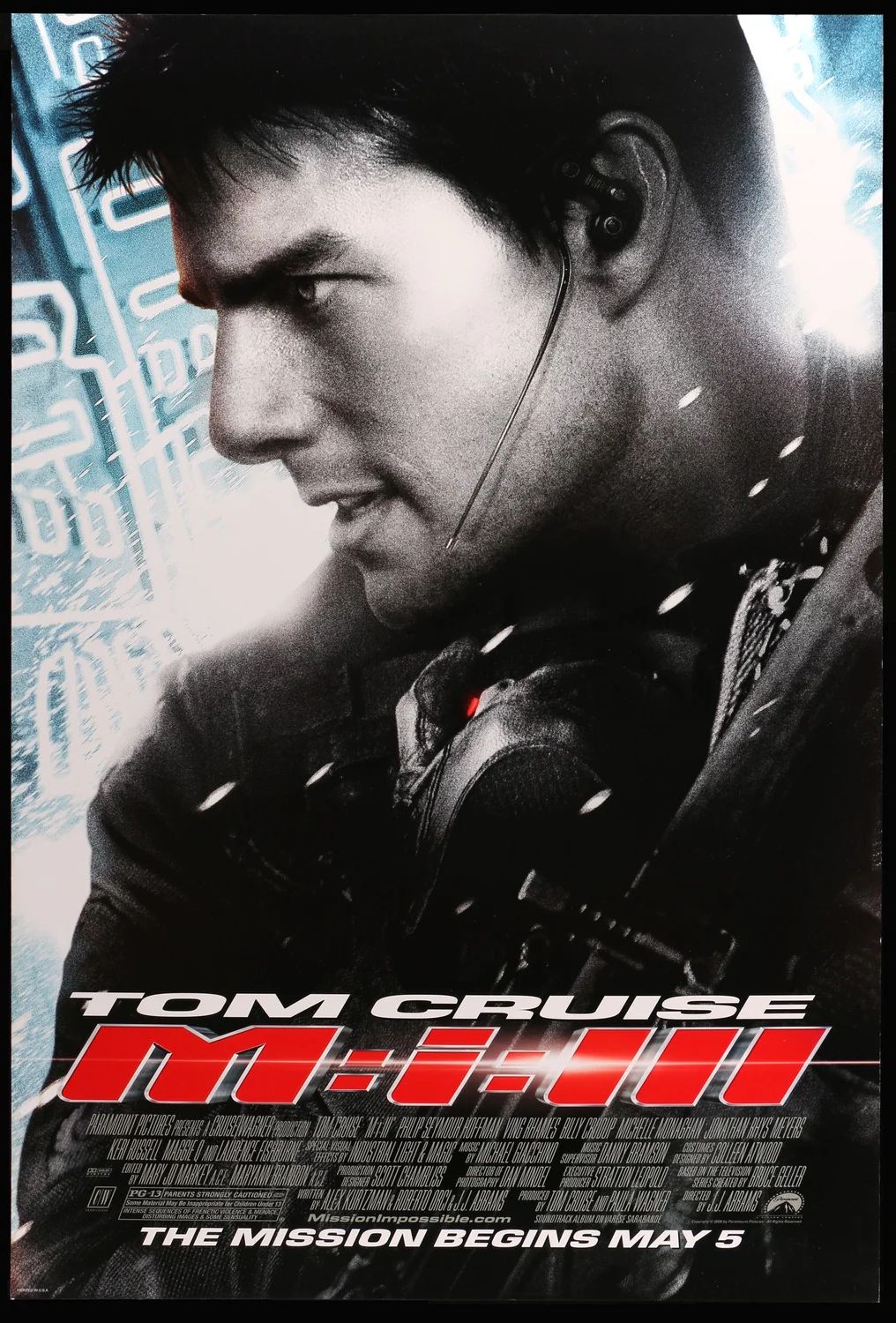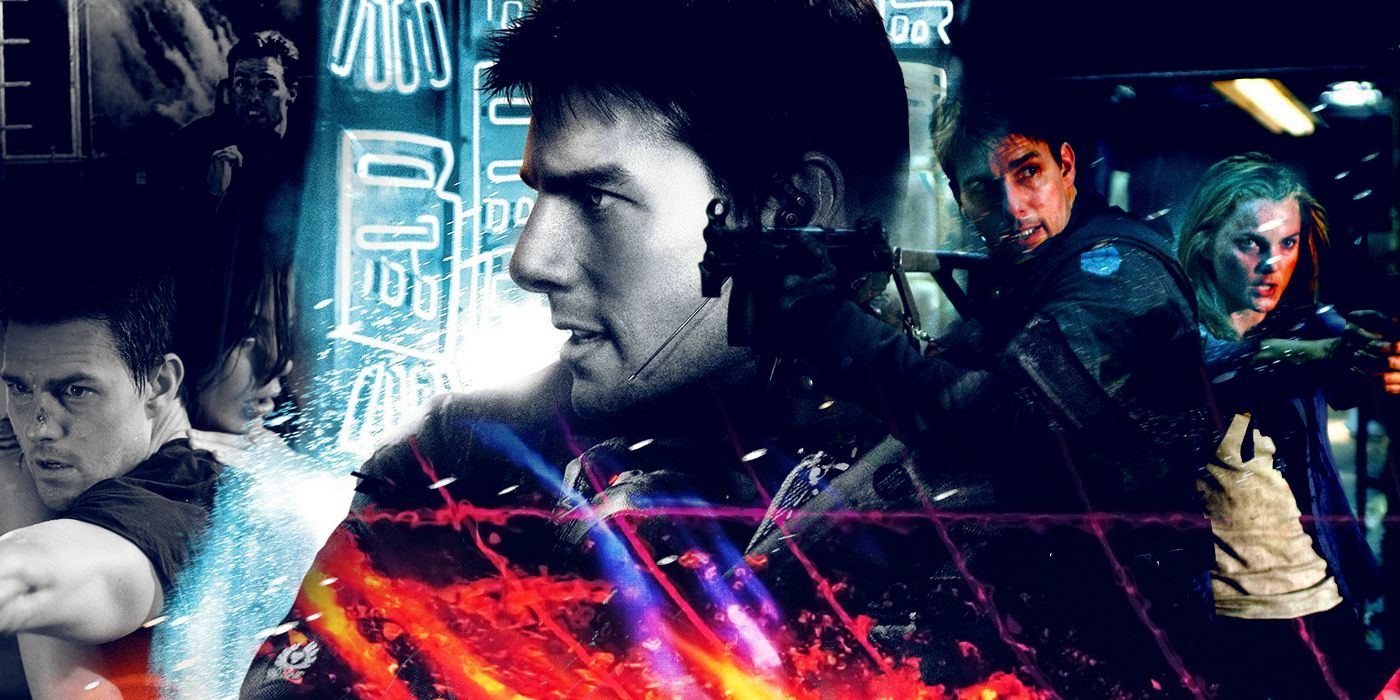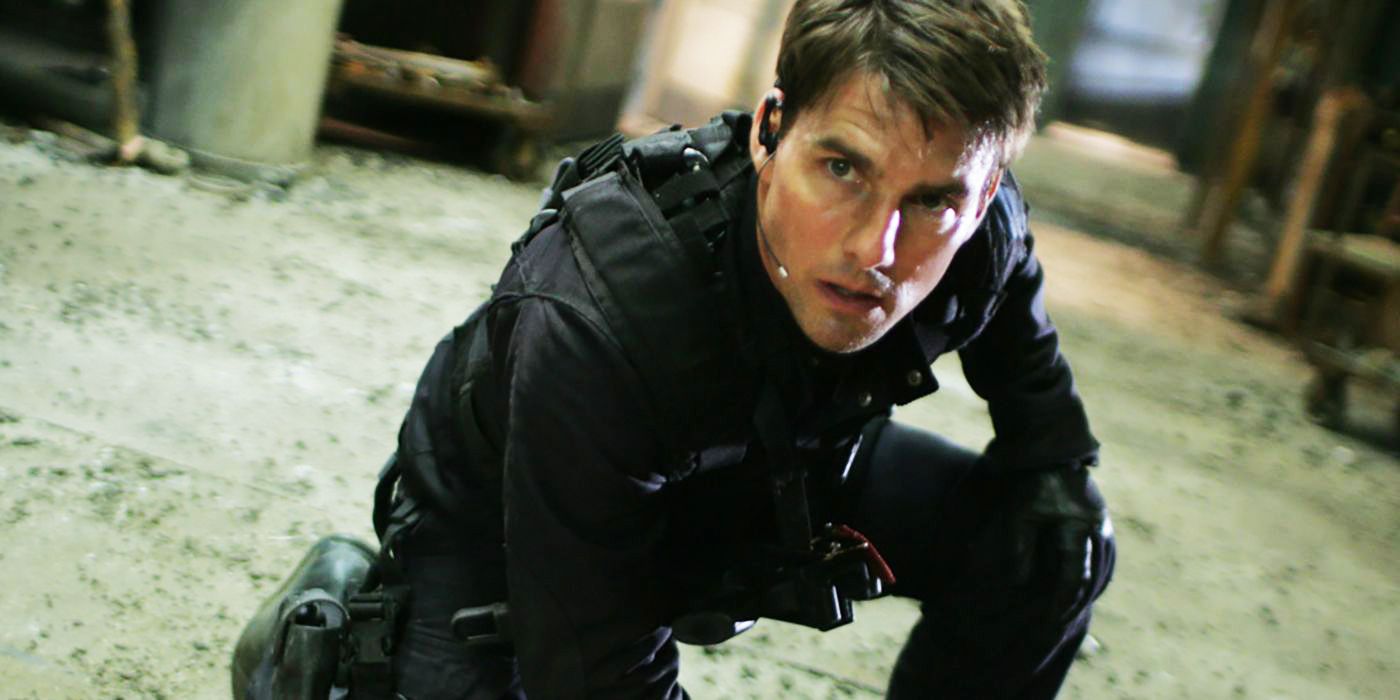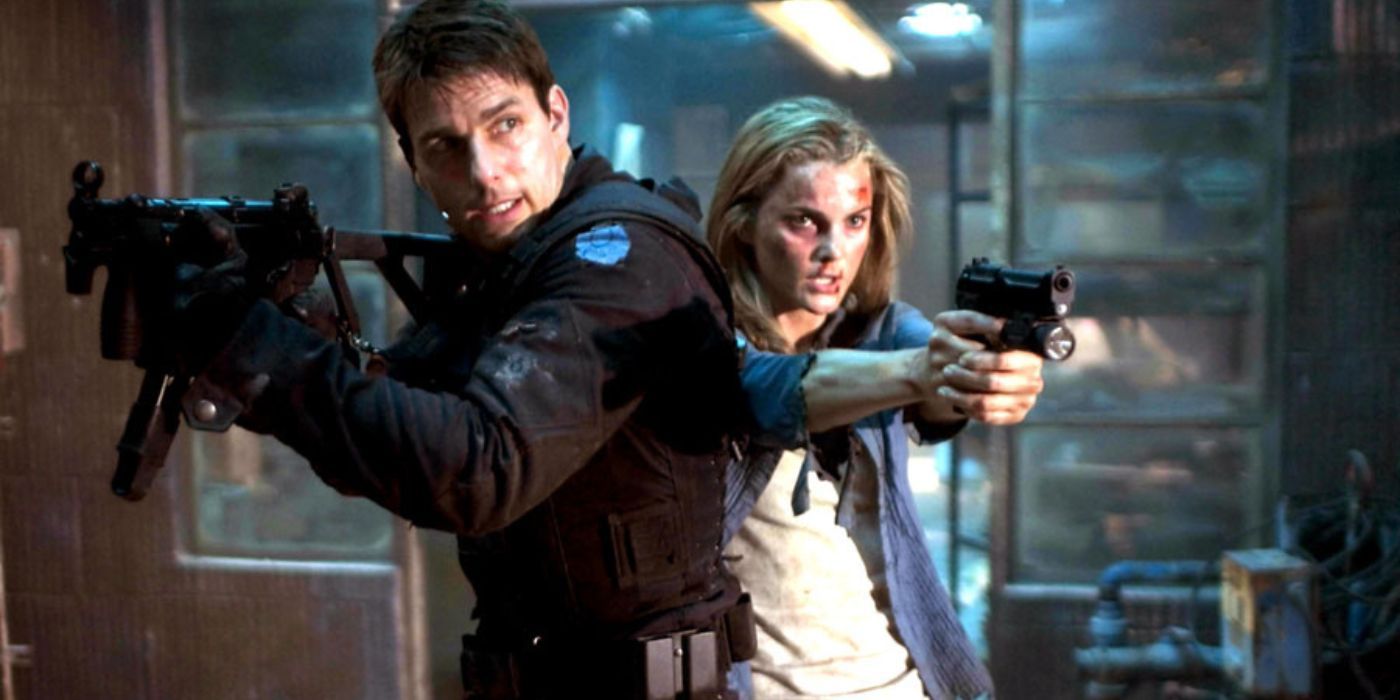The Big Picture
- Mission: Impossible III went through significant development changes, with two directors and a cast being hired and fired.
- David Fincher was originally set to direct M:I III but later dropped out. Joe Carnahan was then hired and began developing a script that was a departure from Mission: Impossible II, but creative differences led to his departure as well.
- J.J. Abrams eventually took over as director and completely revamped the script, resulting in a new cast and delays in production. Despite the delays, Mission: Impossible III was eventually released and marked the beginning of a successful revival for the franchise.
The Mission: Impossible franchise is hands down one of the best and most fertile film series running right now, which is all the more impressive considering it’s been going for over two decades. Now seven films deep, the key to the Mission: Impossible series' success has been its willingness to evolve and change with each entry, as every director puts his own stamp on the “spy movie” genre using the basic tools of what a Mission movie should be. But as much as the series has changed from film to film, one single entry in particular went through a serious amount of evolution during development: Mission: Impossible III.
Indeed, while J.J. Abrams’ finished version teed up the template for the current state of the Mission franchise, getting there was no easy task. No less than two other directors took a stab at Mission: Impossible 3, and an entire cast was hired and then fired, all before Abrams and his team crafted the story we now know as M:I III. When Tom Cruise first kicked off this franchise with 1996’s Mission: Impossible, it was his first project as a producer, and he was serious about kick-starting his own franchise the right way. He hired acclaimed director Brian De Palma to adapt the Mission TV series into a compelling feature film, and while that film had its own development issues (De Palma and Cruise reportedly butted heads throughout production), it turned out to be a winner. Cruise subsequently hired John Woo to take the helm of Mission: Impossible II and move the series into a radically different visual space, with Cruise aiming to blow out this franchise into a major blockbuster event. That worked as well, and the 2000 sequel outgrossed the first Mission by $100 million, sitting pretty at a worldwide total of $549 million.

Mission Impossible 3
IMF agent Ethan Hunt comes into conflict with a dangerous and sadistic arms dealer who threatens his life and his fiancée in response.
- Release Date
- 20006-05-05
- Director
- J.J. Abrams
- Cast
- Tom Cruise , Michelle Monaghan , Ving Rhames , Phillip Seymour Hoffman , Billy Crudup , Maggie Q , Simon Pegg
- Runtime
- 2h 6m
- Main Genre
- Action
David Fincher Was Attached To Direct 'Mission: Impossible III'
Paramount Pictures was, understandably, eager to get going on Mission: Impossible 3 sooner rather than later, and while Cruise went and tackled the back-to-back productions of Vanilla Sky and Minority Report, he was also searching for the right filmmaker to steer Mission: Impossible 3. As it turns out, in 2002 he and Paramount settled on an exciting albeit surprising choice: David Fincher. The Fight Club filmmaker was just coming off the box office hit Panic Room and Cruise sparked to his strong visual talents as an exciting choice to helm Mission: Impossible 3. And perhaps even more surprising, Fincher was interested in taking on another franchise film after his disastrous directorial debut experience on Alien 3.
At the time, Fincher praised the “really cool” and “violent” idea they had in mind for M:I 3, and while he admitted as a filmmaker you “can never make exactly the movie you want to make,” he conceded that if Paramount let them do “even half of what we want, it should make for an interesting film.” The studio hoped to get the film ready in time for release in Summer 2004, but unfortunately, the world never got to see what a David Fincher Mission: Impossible movie would look like.
About a year after Fincher became attached, he committed to making The Lords of Dogtown his next film and subsequently fell off Mission: Impossible III. He would eventually exit the director’s chair on Dogtown in favor of making Zodiac, but he subsequently alluded to potential creative disagreements as a reason for leaving Mission:
“I think the problem with third movies is the people who are financing them are experts on how they should be made and what they should be. At that point, when you own a franchise like that, you want to get rid of any extraneous opinions. I'm not the kind of person who says, ‘Let's see the last two, I see what you're going for.’ You'll never hear me say, ‘Whatever is easiest for you.’”
Joe Carnahan Was Brought On To Replace Fincher
Paramount wasted no time in finding a replacement, however, as Cruise sparked to filmmaker Joe Carnahan after seeing and helping secure theatrical distribution for the director’s gritty crime drama Narc. Carnahan signed on to direct Mission: Impossible III in February 2003, and he began developing a script with Dan Gilroy (Nightcrawler) that Carnahan described as a “punk rock” version of Mission: Impossible, one that distanced itself from Mission: Impossible II, which Carnahan considered “a parody of a spy movie.”
Carnahan crafted a story that involved the privatization of the military and Africa, with a villain inspired by Oklahoma City bomber Timothy McVeigh. But as development continued, Carnahan’s vision didn’t exactly match up with what the studio had in mind. He wanted to make a film in the vein of '70s paranoia dramas like Marathon Man, admitting his version of the film would have been “a $50 million version, not the $186 million version that it was ultimately budgeted for.” But in 2003, Hollywood was in the wake of the immense blockbuster success of franchise films like Spider-Man, Harry Potter, and The Lord of the Rings, and Paramount understandably wanted something “big” to sell. Carnahan continued to resist blowing out the scale of the film, but producers brought in Robert Towne — who co-wrote the first two Mission movies — to rewrite the script.
Reflecting on the experience to Grantland back in 2014, Carnahan says he couldn’t get onboard with the new script:
“I thought it was bad and uninspiring. I thought it was more of the same from [Mission: Impossible II]. We started having these vocal disagreements about it. Looking back, I should have just shut up and done my thing, but I couldn’t go down that road.”
Scarlett Johansson Was Cast Alongside Carrie-Anne Moss and Kenneth Branagh
As development continued, casting bubbled up. Kenneth Branagh was hired to play the villain, Carrie-Anne Moss was onboard as the female lead, and Scarlett Johansson — red-hot off of Lost in Translation — was also cast. But in July 2004 the creative differences were too substantial to overcome, and Carnahan left the project in the midst of pre-production. Less than a month later, Paramount announced that J.J. Abrams had been hired to step in and take over, making his feature directorial debut on what was quite genuinely a speeding train. Cruise chose Abrams after bingeing the TV series Alias, but Abrams had his own scheduling hurdles — he was in the midst of editing the pilot for a TV series called Lost, which was about to debut on ABC.
So Paramount — which had at one time planned on releasing Mission: Impossible III in the summer of 2004 — now agreed to push the start of filming to the summer of 2005, and Cruise opted to make War of the Worlds in the Fall 2004 slot that was penciled in for Mission: Impossible 3's production. Once Abrams finished up Lost, he turned his attention to Mission and quickly realized he had his own story to tell. Abrams enlisted fellow Alias writers and The Island scribes Roberto Orci and Alex Kurtzman and got to work overhauling the script, at which point it became clear that Mission was undergoing yet another major evolution.
In May 2005, Johansson and Moss dropped out of Mission: Impossible III citing script changes and scheduling delays. Indeed, Abrams explained it made little sense for the actors to keep waiting around for roles that were being entirely reworked:
"The script was rewritten. I'm a huge fan of each actor that they cast originally, but to have kept the actors when we are reinventing the story would have been an odd process. To say, 'Write a script with these people in mind for characters that haven't been written,' just felt like we had to start over with a clean slate."
Branagh subsequently dropped out as well, with a whole new ensemble led by Philip Seymour Hoffman, Michelle Monaghan, and Laurence Fishburne signing on. Production at long last got underway in July 2005, and Mission: Impossible III hit theaters in May 2006 — two years after the initial target date, and a full six years after the release of Mission: Impossible II.
'Mission: Impossible III' Set the Franchise Back on Track
While Mission 3 earned mostly positive reviews, the significant delays severely impacted the box office. Cruise was in the wake of a PR nightmare that began with the infamous “couch jumping” incident in May 2005 and blew up once more with the “Trapped in the Closet” controversy over a South Park episode that aired in March 2006, and indeed the negative publicity may have had something to do with the underwhelming box office performance of Mission: Impossible III. The sequel grossed $398 million worldwide, which was nearly $150 million less than the worldwide total of Mission: Impossible II.
But the Mission franchise is nothing if not resilient. The reputation of Mission: Impossible III has grown more positive in the ensuing decade, and while it took nearly six years to get a follow-up off the ground, Mission: Impossible – Ghost Protocol breathed new life into the series with a franchise-high $694.7 million worldwide gross. The 2015 follow-up Rogue Nation came close to matching that with $682.7 million, Mission: Impossible - Fallout earned over $790 million making it the highest-grossing film in the franchise, while this year's Mission: Impossible - Dead Reckoning Part One opened to critical praise but a disappointing box office of $567.5 million due to a conflicting box office schedule with both Barbie and Oppenheimer. Mission Impossible 8 was just delayed from its original date of June 2024 to May 23, 2025, but it will look to get the franchise back on trakc at the box office.
Mission: Impossible remains one of the most exciting film franchises ever made, but the road to success hasn’t been without its own impossible missions — not the least of which was getting Mission: Impossible III off the ground in the first place. But as they say, all's well that ends well.
Mission: Impossible III is available to stream on Netflix in the U.S.



